An Italian Pantry
Cheese
Gabriella Ganugi
WINE APPRECIATION GUILD







Contents
Fresh Cheeses 24
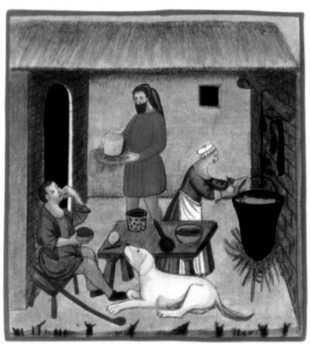
This medieval miniature shows Ricotta being made. The earliest encyclopedic manual on cheese in Europe was compiled by Pantaleone da Confidenza and published in 1477. His detailed descriptions of Italian cheeses include many that are still on the market today, such as Fontina, Robiola, and Marzolino del Chianti.
In Italy, cheese is made from cow's milk, as well as from the milk of ewes, goats, and water buffalo.

Introduction
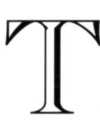 he Italian word for cheese: formaggio, comes from the Latin formaticum, meaning "solidified milk." The origins of cheesemaking probably date back to the dawn of farming, when sheep, goats, and cattle were first kept and new methods for conserving food were invented. Cheese was a staple food for the ancient Greeks and Romans. In Roman times, cheese was served at most meals and its flavor was frequently enhanced with garlic, salt, fish, or eggs.
he Italian word for cheese: formaggio, comes from the Latin formaticum, meaning "solidified milk." The origins of cheesemaking probably date back to the dawn of farming, when sheep, goats, and cattle were first kept and new methods for conserving food were invented. Cheese was a staple food for the ancient Greeks and Romans. In Roman times, cheese was served at most meals and its flavor was frequently enhanced with garlic, salt, fish, or eggs.
Cheese was also a popular food during the Middle Ages. According to legend, Attila the Hun ordered the preparation of a special cheese made from human milk, and it is said that Charlemagne discovered Roquefort cheese at a country monastery as he returned from a hunting trip. Production increased in medieval times, and records show that Parmesan, Gorgonzola, Mozzarella, and Pecorino (among others), were all being made by the 12th century.
Cheesemaking underwent profound changes as the Industrial Revolution took hold in Italy. Many traditional cheeses disappeared, but others were improved and became more widespread as a result of scientific research and more efficient production systems. Cheesemakers had a greater understanding of the importance of temperature and humidity control, as well as the importance of hygiene.
At the end of the 1980s it was estimated that more than 400 different types of cheese were being produced in Italy. In this book we have tried to identify and describe the better-known and most widely available types. Even so, the choice was arduous, and the exclusion of many remarkable cheeses is due entirely to lack of space rather than regard.
The production of many cheeses is controlled by government regulations that guarantee quality and protect regional varieties from poorer imitations. Beginning in 1955 some cheeses became DOC (Denominazione di Origine Controllata). I n 1995 a new DOP (Denominazionedi Origine Protetta) category was introduced. The cheeses listed below are all DOP.





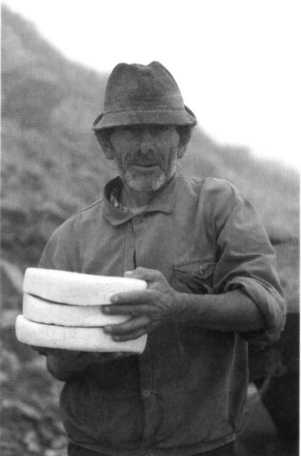
Above: Some of the best cheeses in Italy are made in the northern alpine regions. This farmer from Piedmont is holding a local variety of Toma.
Below and center page: Parmesan cheese is made by curdling milk which is partially skimmed half way through the coagulating process. Whey from an earlier batch is then added. More than 1,000 lb (500 kg) of cow's milk is required to make just one form (wheel) of Parmesan.
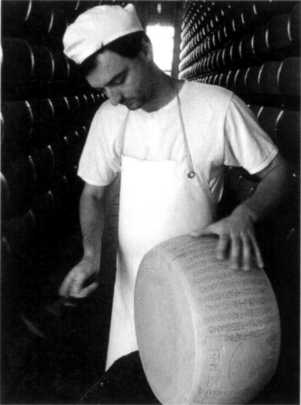
Making Cheese
 heese is made of curd, a semisolid substance that forms when milk coagulates, or curdles. Milk curdles naturally if left at room temperature for long enough, and in some areas of the world fresh cheese is made in this way. In Italy, thousands of years of cheesemaking has refined this process and an estimated 400 types of cheeses are produced. Almost all are made in the same way; by solidifying milk, adding salt, and evaporating part of the whey (the watery liquid that separates from the curds). For hard cheeses, the curds must then be cooked in order to completely evaporate the whey and create a better consistency. The cheese is then poured into molds called fascere and left to dry. The aging process completes the cheese, and can last for months or even years in the casere, or cheese warehouses. There the cheeses are repeatedly turned, in order to maintain a consistent texture.
heese is made of curd, a semisolid substance that forms when milk coagulates, or curdles. Milk curdles naturally if left at room temperature for long enough, and in some areas of the world fresh cheese is made in this way. In Italy, thousands of years of cheesemaking has refined this process and an estimated 400 types of cheeses are produced. Almost all are made in the same way; by solidifying milk, adding salt, and evaporating part of the whey (the watery liquid that separates from the curds). For hard cheeses, the curds must then be cooked in order to completely evaporate the whey and create a better consistency. The cheese is then poured into molds called fascere and left to dry. The aging process completes the cheese, and can last for months or even years in the casere, or cheese warehouses. There the cheeses are repeatedly turned, in order to maintain a consistent texture.
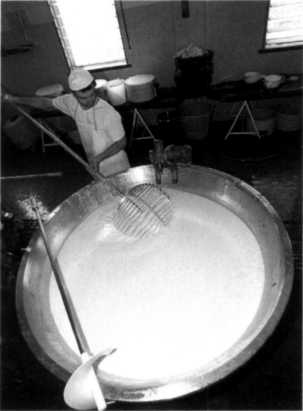
The fat content in cheese must be evaluated in comparison with its dry weight. A "high fat" cheese has more than 42% fat. If the fat content is between 20-42% it is called a "semi-fat" cheese, and if less than 20% it is classified as "low fat."
Depending on the production process, cheese is divided into two categories:

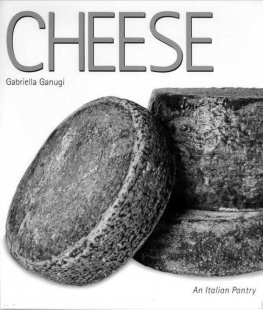
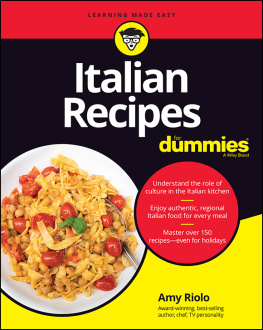

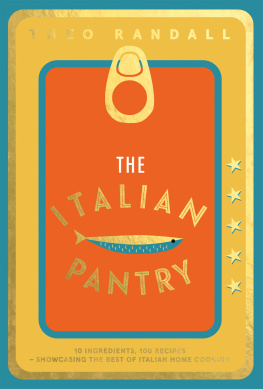

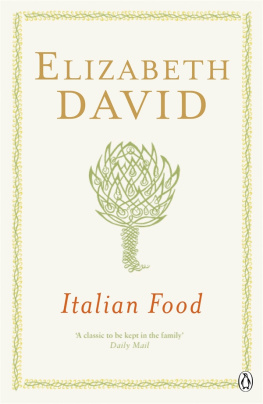










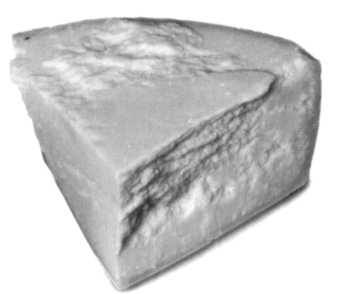
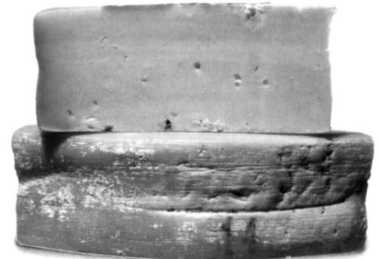
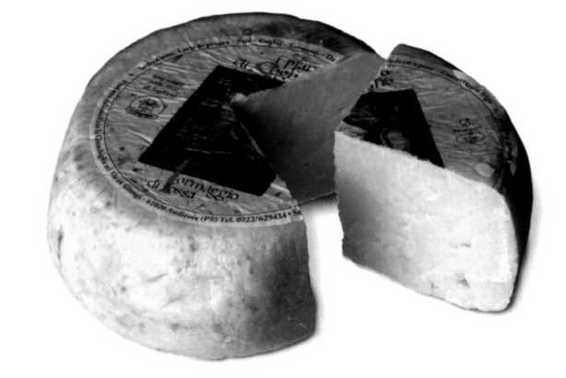


 he Italian word for cheese: formaggio, comes from the Latin formaticum, meaning "solidified milk." The origins of cheesemaking probably date back to the dawn of farming, when sheep, goats, and cattle were first kept and new methods for conserving food were invented. Cheese was a staple food for the ancient Greeks and Romans. In Roman times, cheese was served at most meals and its flavor was frequently enhanced with garlic, salt, fish, or eggs.
he Italian word for cheese: formaggio, comes from the Latin formaticum, meaning "solidified milk." The origins of cheesemaking probably date back to the dawn of farming, when sheep, goats, and cattle were first kept and new methods for conserving food were invented. Cheese was a staple food for the ancient Greeks and Romans. In Roman times, cheese was served at most meals and its flavor was frequently enhanced with garlic, salt, fish, or eggs.

 heese is made of curd, a semisolid substance that forms when milk coagulates, or curdles. Milk curdles naturally if left at room temperature for long enough, and in some areas of the world fresh cheese is made in this way. In Italy, thousands of years of cheesemaking has refined this process and an estimated 400 types of cheeses are produced. Almost all are made in the same way; by solidifying milk, adding salt, and evaporating part of the whey (the watery liquid that separates from the curds). For hard cheeses, the curds must then be cooked in order to completely evaporate the whey and create a better consistency. The cheese is then poured into molds called fascere and left to dry. The aging process completes the cheese, and can last for months or even years in the casere, or cheese warehouses. There the cheeses are repeatedly turned, in order to maintain a consistent texture.
heese is made of curd, a semisolid substance that forms when milk coagulates, or curdles. Milk curdles naturally if left at room temperature for long enough, and in some areas of the world fresh cheese is made in this way. In Italy, thousands of years of cheesemaking has refined this process and an estimated 400 types of cheeses are produced. Almost all are made in the same way; by solidifying milk, adding salt, and evaporating part of the whey (the watery liquid that separates from the curds). For hard cheeses, the curds must then be cooked in order to completely evaporate the whey and create a better consistency. The cheese is then poured into molds called fascere and left to dry. The aging process completes the cheese, and can last for months or even years in the casere, or cheese warehouses. There the cheeses are repeatedly turned, in order to maintain a consistent texture.